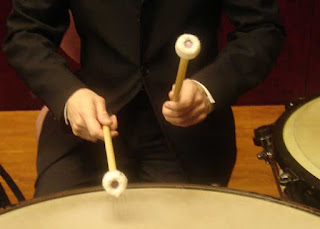"Space is the place!" - Sun Ra

10 Weeks To Better Drumming - Part 7 Last week we talked about notes, lots of them, all lined up one after another. This week we want to become more aware of the space between those notes. If you look at drums & percussion, most sounds are very short, so short that with say, a quarter note, we only really play the very beginning of the note. The rest of the note is silence/space. So even in a very busy pattern, we are probably playing more space than actual sound. Now if we play notes far apart, the amount of space between them is huge. What do we do with that space? How do we accurately account for it? When playing drums, percussion, and especially Gongs in a Meditation context, it's absolutely imperative to be aware of the space, as much as the notes. Feel the space Let's look at some exercises to help us become more aware of the space between the notes : #1 - Start with 1 note and 3 equal notes of silence (you can think of these as quarter notes &



